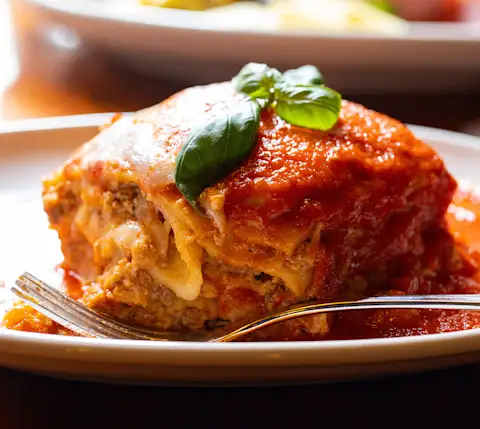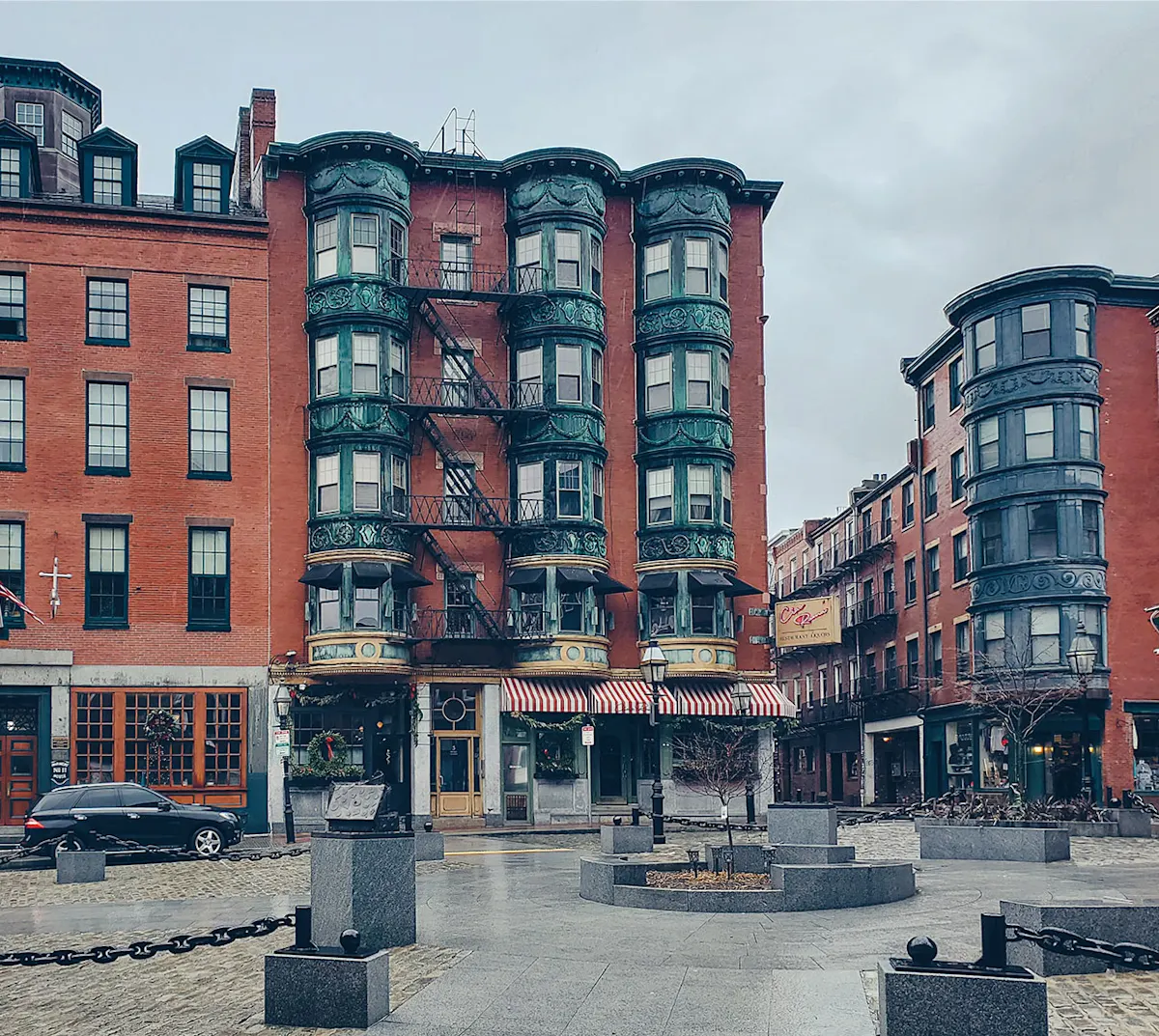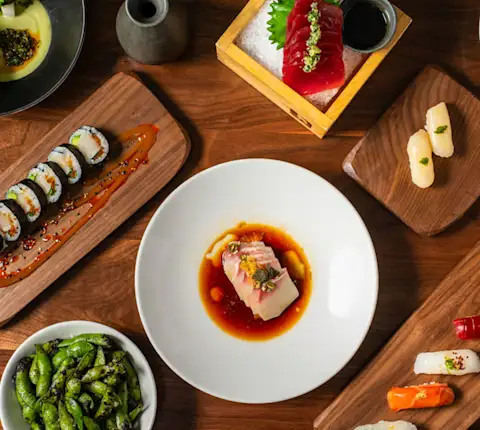Located northeast of the Rose Fitzgerald Kennedy Greenway and adjacent to Boston Harbor, Boston’s North End is unofficially known as the city’s Little Italy. The North End is a miniscule neighborhood, running one-square-mile from the water, on its eastern boundary, to Government Center, on the southwestern side.
The neighborhood has developed a reputation for Italian heritage, although the North End has boasted a complex network of immigrant residents since the 1600s. Its modern association, however, has been forged by over 100 restaurants, bakeries, salumerias, cafés, and storefronts that call the North End home. The neighborhood, which has an imminently walkable feel and draws visitors from all over the city, is also Boston’s oldest residential area, dating back to the 17th century.
“The North End is probably the greatest inner-city community in the country and probably the greatest Italian community in the country,” says Frank DePasquale, who has lived in the area since he emigrated at age 4, from a small town under Mount Vesuvius near the Amalfi Coast. DePasquale currently owns eight restaurants in the neighborhood: Bricco Ristorante & Enoteca, Mare, Aquapazza, Bricco Panetteria, Trattoria il Panino, Bricco Salumeria, Quattro, and Dolce. He attributes the North End’s importance to a number of factors: its location in the center of Boston; its historical significance, sitting right on the storied Freedom Trail; and even walking-distance proximity to the TD Garden (still called the Boston Garden by people who grew up in and around Massachusetts), where both the Bruins and Celtics play.

“The North End has their feasts, in the summertime,” DePasquale says, “which brings millions and millions of people.” In June, the neighborhood hosts three: Santa Maria Di Anzano Procession, Saint Anthony of Padua Procession, and Saint Padre Pio. July visitors can check out the celebrations of Madonna delle Grazie Procession, the San Rocco Procession, and the St. Joseph Procession. And, August is practically an entire month of celebration. The St. Agrippina di Mineo Feast runs the first weekend of the month, followed by the Madonna Della Cava Feast, the Fisherman’s Feast of the Madonna Del Soccorso di Sciacca, the Feast for Santa Lucia, and the so-called “feast of all feasts,” Saint Anthony’s Feast, which goes well into the night.
The neighborhood, says DePasquale, is the States’ closest approximation of a small Italian village. The proof is in the restaurants and the overall dining scene: Restaurateurs and business owners who arrive in the North End come to stay.
At DePasquale’s Bricco Salumeria and Pasta Shop, which opened in 2014, traditional Italian-American dishes get a lift with locally sourced fish and produce. The Caesar salad, made with Bibb lettuce and slightly bitter radicchio, features crispy ricotta polpette. Mussels, fresh from Cape Cod’s Wellfleet, are served steamed with garlic, caper berries, and crusty crostini for dipping. The restaurant also offers a delivery menu of salumeria treats, like its signature porchetta: roast suckling pig that has been deboned, seasoned with garlic and herbs, rolled, roasted, and sliced to be served as the succulent filling for sandwiches.
“In the North End, you have an owner that is outside of his restaurant every single day, cleaning up in front of the restaurant or fixing his restaurant every single day, an owner that embraces every single customer with a hug, a kiss, a conversation,” DePasquale says of his peers. The neighborhood, he stresses, is one of deep hospitality and respect for a sense of place.
You can feel it not far away at the family-owned restaurant Giacomo’s Ristorante opened on the North End’s iconic Hanover Street in 1984. Owner Jackie Taglieri set a simple model for success: a menu with spare options (order a pasta shape, match it with one of the restaurant’s signature sauces, pay with cash) and plenty of happy customers. Eating at Giacomo’s feels kind of like eating at a friend or family’s really good dinner table, which is probably why, over time, the brand expanded to other parts of Boston.

Not all of the secondary, tertiary, and even later-model Giacomo’ses made it, in the end. But the original is still standing strong. Insiders know that the restaurant’s signature dishes include the fettuccine with prosciutto and peas in a garlic cream sauce; linguine with clams scampi-style, with white wine, garlic, and oil; fusilli Siciliana with homemade pasta, eggplant, onions, and mozzarella cheese in a plum tomato sauce; and linguine frutti di mare fra diavolo, in a spicy lobster-based red sauce.
When it comes to pizza, New Yorkers may want to argue about the merits of Massachusetts-made slices, but North Enders will talk your ear off when it comes to the original Regina Pizzeria (a conversation that may be familiar to those who have oft-debated the origins and true value of NYC’s one original Ray’s). Founded in 1926 by Luigi D'Auria right in Boston’s North End, Regina is sometimes referred to as Regina Pizzeria–or Pizzeria Regina, depending on who you talk to.
In 1956, the Polcari family took over the pizzeria, which has since become a mini-chain, available within New England only. The original Regina, on Thatcher Street, is known for two pies: the Margherita, served with a heavy helping of chopped basil, and the Giambotta, with pepperoni, Regina sausage, salami, mushrooms, peppers, onions, fresh basil, mozz, and, if you ask for it, anchovies. Regina is one of the sole North End businesses that has slipped out of the North End and gained true traction in other neighborhoods.
For a full tour of Hanover, stop by Lucia Ristorante, a classic iteration of the Italian-American ideal that opened in 1977. A cavernous, brick-walled room with a muraled ceiling offers a scenic backdrop for some of the neighborhood’s best Italian food. Must-order dishes include the veal saltimbocca, carozza–breaded and fried mozzarella cheese, and pappardelle Bolognese.
On Salem Street, Antico Forno is where you’ll find the North End’s “antique oven” and some of the area’s best pizza (with no disrespect to Regina, of course). The oven at Antico Forno is not only home to pizza, which is exceptional (expect a chewy crust from a hot-as-blazes wood-fire). Other dishes are also finished in the oven, like the gnocchi di patate, made in house and served beneath a San Marzano tomato sauce and a blanket of mozzarella cheese.
Stay on Salem Street for some of the North End’s best sandwiches, at Monica’s Mercato & Salumeria, which opened in 1997 as a market dedicated to fresh Italian ingredients. The Mendozas, an Argentine family who immigrated to the United States in 1984, have spent the past 40 years in the North End, working in restaurants and becoming part of the local scenery.
In 1995, they opened their first restaurant, Monica’s Bar and Grill, before segueing into their supremely popular store. Italian snacks, dry goods, prepared foods, homemade pastas, and, of course, sandwiches are all available at the Mercato (the Italian sub — a marriage of prosciutto, mortadella, salami, provolone, lettuce, tomato, onion, balsamic vinegar, olive oil, hot peppers, and pickles — is the spot’s signature sandwich).
One of the most delicious streets in the neighborhood is also home to Al Dente, an affordable pasta joint where carb loading is the name of the game. There’s nothing fancy about Al Dente, and that’s part of the point — and the joy — in taking a stroll or ordering in a heaping plate of carbonara for delivery.
No experience of the North End would be complete without a stop at the bocce courts in Langone Park on Commercial Street, where games are played every Tuesday. Afterward, walk over to Massimino’s Cucina Italiana, for a plate of littleneck clams in garlic and tomato sauce, a tiramisu, and a bottle of red wine (or, even better, have it delivered).
Nowhere in Boston, many would argue, is there a place where the neighborhood still feels communal, where customers are true regulars and where business owners are as dedicated to doing the work of keeping things small. For the true necessities, locals and visitors alike flock to the businesses owned by people who have lived and worked in the area for generations. “There’s such an influx of Italians here,” DePasquale says. “They moved away to go to Lynnfield, to go to Medford, to go to Somerville, or other parts. But the feasts bring them all back, right here. When it’s time to celebrate, they come from all over the country.”
Discover Boston
Photo credits:
Feature photo by Casey Lovegrove on Unsplash
Lasagna by Brian Samuels Photography






